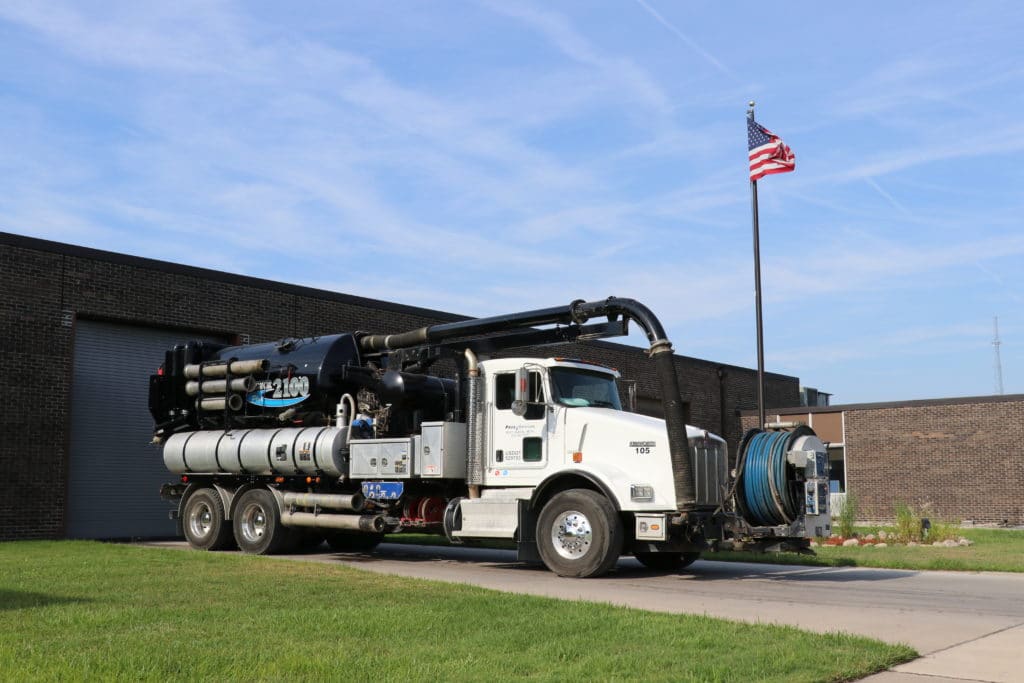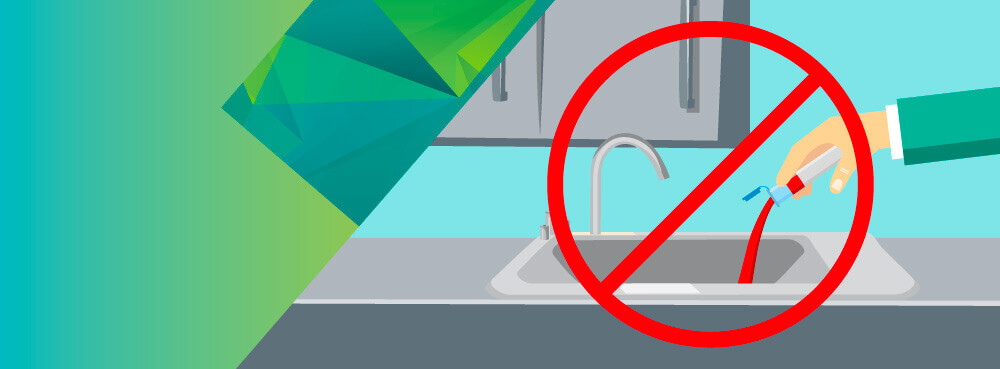Industrial Wastewater Treatment: Advanced Methods for Effective Administration
Industrial Wastewater Treatment: Advanced Methods for Effective Administration
Blog Article
Comprehending the Comprehensive Process of Liquid Garbage Disposal: Best Practices and Environmental Impact Considerations
The monitoring of liquid waste disposal is a complex concern that needs a detailed understanding of numerous ideal techniques and their associated environmental impacts. From the types of fluid waste created to the methods used for collection, therapy, and last disposal, each step plays a critical role in protecting communities and public wellness. As governing standards progress and technology advancements, the discussion around these procedures comes to be increasingly significant. What effects do these adjustments hold for future sustainability initiatives, and exactly how can stakeholders make sure that they are adequately resolved?
Types of Liquid Waste
Comprehending the numerous sorts of liquid waste is vital for effective administration and disposal practices. Fluid waste can be broadly classified into numerous types, each needing distinct handling and therapy strategies.
Industrial fluid waste usually consists of harmful materials, consisting of hefty steels, solvents, and chemicals, produced during producing processes. These wastes necessitate rigorous governing compliance to secure human health and wellness and the atmosphere. Residential liquid waste mainly describes wastewater generated from families, consisting of sewer and greywater, which, although less poisonous, can still present significant dangers if poorly taken care of.
Agricultural liquid waste, including drainage from ranches, usually contains fertilizers and chemicals that can cause ecological degradation otherwise treated appropriately. Clinical liquid waste, generated from healthcare centers, consists of polluted liquids such as bodily fluids and chemicals, calling for specialized disposal techniques to avoid infection and ecological contamination.
Lastly, oil and oil waste, generally created by dining establishments and automobile industries, can trigger severe blockages in sewer systems otherwise managed effectively. Recognizing these categories helps with targeted techniques for therapy, conformity with guidelines, and efficient disposal methods, ultimately advertising environmental sustainability and public health safety.

Collection Techniques
Reliable collection approaches are essential for the correct administration of fluid waste, making sure that it is collected safely and effectively before treatment or disposal. Numerous methods are employed depending upon the kind of liquid waste created, the volume, and the details qualities of the waste.
One common technique is making use of devoted collection tanks or sumps, which are designed to catch fluid waste at the source. These systems typically incorporate pumps that promote the transfer of waste to larger storage space containers or therapy centers. Additionally, mobile collection units equipped with vacuum cleaner innovation are employed in scenarios where waste is created periodically or in hard-to-reach areas.
For industrial settings, closed-loop systems can successfully reduce spills and leakages, permitting the recovery and reuse of fluid waste. It is also necessary to train workers on correct collection methods to reduce dangers related to dangerous substances.
Additionally, executing regular maintenance timetables for collection tools makes certain optimum efficiency and safety and security. The combination of innovative monitoring systems can boost collection effectiveness by providing real-time information on waste levels and possible threats. Overall, effective collection methods are foundational to sustainable liquid waste monitoring techniques.
Treatment Procedures
Therapy processes play an important function in the administration of liquid waste, transforming possibly harmful materials into reusable resources or risk-free effluents - liquid waste disposal. These processes can be broadly categorized right into physical, chemical, and biological techniques, each customized to deal with particular pollutants present in the waste stream
Physical therapy approaches, such as sedimentation and filtering, work by eliminating suspended solids and particulate issue. These methods are typically the very first step in the treatment chain, efficiently minimizing the lots on succeeding procedures. Chemical treatments include using reagents to counteract dangerous materials, speed up hefty metals, or oxidize organic pollutants, therefore boosting the safety and security of the effluent.
Organic treatment procedures, including turned on sludge systems and anaerobic food digestion, exploit on the all-natural capabilities of bacteria to break down natural issue. These approaches are particularly reliable for wastewater consisting of eco-friendly toxins. Advanced treatment innovations, such as membrane purification and progressed oxidation procedures, are significantly utilized to accomplish greater degrees of filtration.
Incorporating a combination of these treatment techniques not only ensures conformity with governing criteria yet additionally promotes ecological sustainability by recuperating valuable sources from fluid waste.
Disposal Options
Exactly how can companies ensure the liable and safe disposal of fluid waste? Efficient disposal alternatives are essential for protecting public health and wellness and the setting. The key techniques include land treatment, disposal, and incineration followed by discharge into metropolitan wastewater systems.
Land disposal includes the mindful containment of liquid waste in assigned landfills, guaranteeing that it does not seep into surrounding dirt or water. Incineration, on the other hand, subjects liquid waste to heats, converting it into ash and gases, which call for appropriate filtration to decrease exhausts. This technique is suitable for hazardous wastes that can not be dealt with with typical ways.
In cases where fluid waste can be treated, companies might choose chemical or biological treatment procedures to reduce the effects of damaging parts prior to releasing the treated effluent right into metropolitan systems. This course generally lines up with regulatory requirements, making sure that the effluent fulfills safety and security criteria.
Eventually, organizations have to conduct complete evaluations of each disposal option to determine its viability, considering variables such as waste structure, governing conformity, and possible dangers to health and wellness and the setting. By selecting ideal disposal methods, organizations can add to a liable waste management Recommended Reading method.
Ecological Influence
The ecological impact of fluid waste disposal is an essential consideration for companies seeking to minimize their eco-friendly impact. Inappropriate disposal methods can result in substantial contamination of water resources, dirt destruction, and adverse impacts on local environments. For circumstances, hazardous fluids can leach into groundwater, presenting risks to alcohol consumption water supplies and water life. Additionally, the discharge of neglected or improperly dealt with waste into surface area waters can result in eutrophication, leading to oxygen exhaustion and the subsequent death of fish and other microorganisms.

To minimize these impacts, organizations must take on finest techniques such as applying strenuous waste treatment procedures, promoting recycling and reuse, and sticking to regulatory standards. By taking a positive strategy to liquid waste administration, entities check that can significantly minimize their ecological impact while supporting lasting development goals. Ultimately, a comprehensive understanding of the environmental influences connected with fluid waste disposal is important for notified decision-making and accountable stewardship of natural deposits.
Verdict
Effective management of liquid waste is crucial for guarding ecological stability and public health. By taking on best practices in disposal, collection, and therapy, alongside adherence to regulatory standards, the potential for harmful contamination of environments can be significantly decreased. Continual improvements in technology and processes add to lasting waste monitoring efforts. Inevitably, a comprehensive understanding of fluid waste disposal not only reduces environmental effects yet additionally fosters a dedication to responsible source management and ecological stewardship.
The management of fluid waste disposal is a multifaceted concern that calls for an extensive understanding of numerous finest techniques and their associated environmental impacts. From the kinds of fluid waste generated to the techniques utilized for collection, therapy, and last disposal, each action plays a critical role in safeguarding communities and public health and wellness.The environmental impact of fluid waste disposal is an essential consideration for organizations looking for to lessen their ecological impact. Eventually, a detailed understanding of the environmental impacts connected with fluid waste disposal is vital for educated decision-making and accountable stewardship of natural resources.
Ultimately, a thorough understanding of fluid waste disposal not only minimizes ecological impacts yet additionally cultivates a dedication to accountable source administration and ecological stewardship.
Report this page